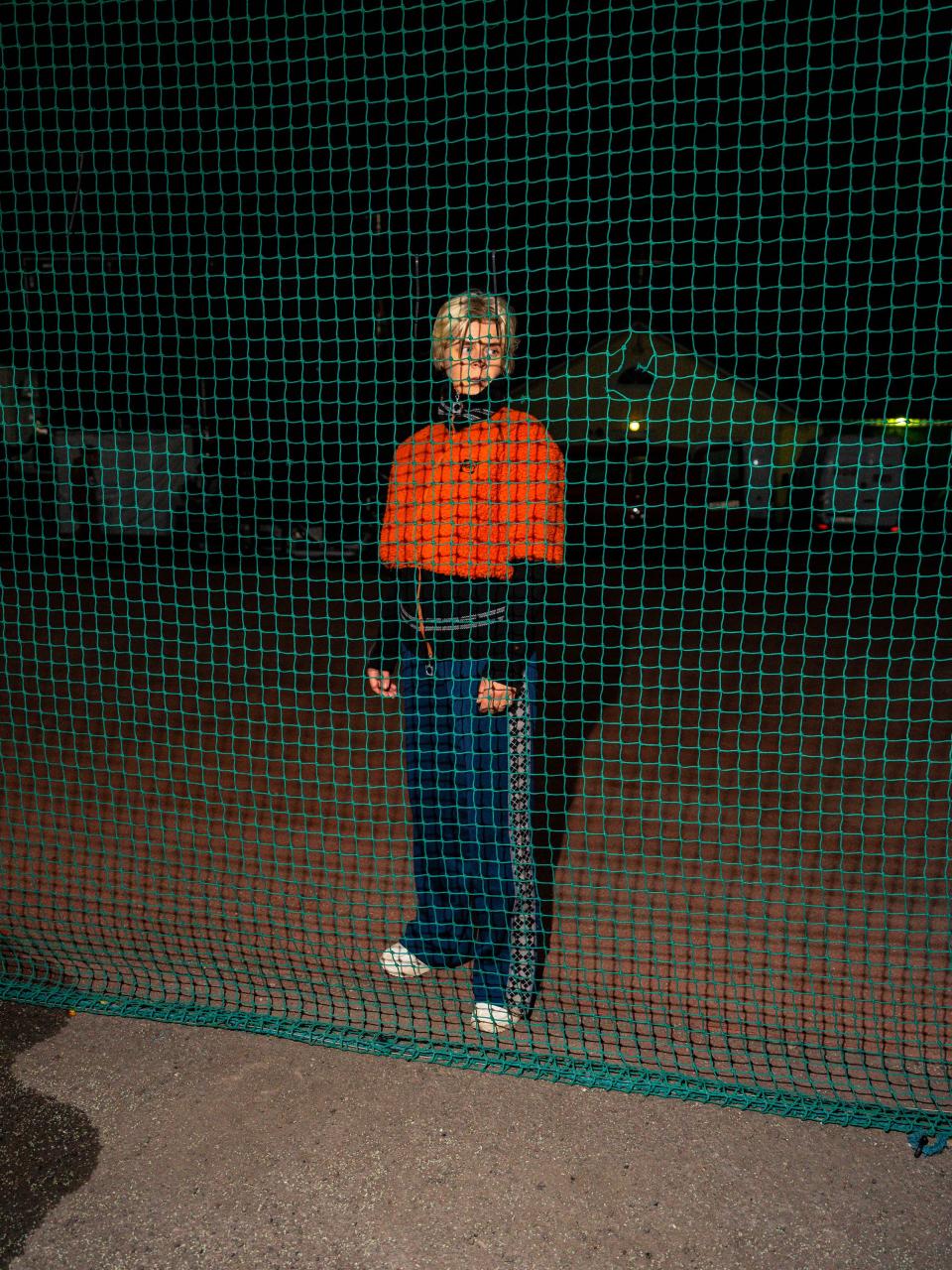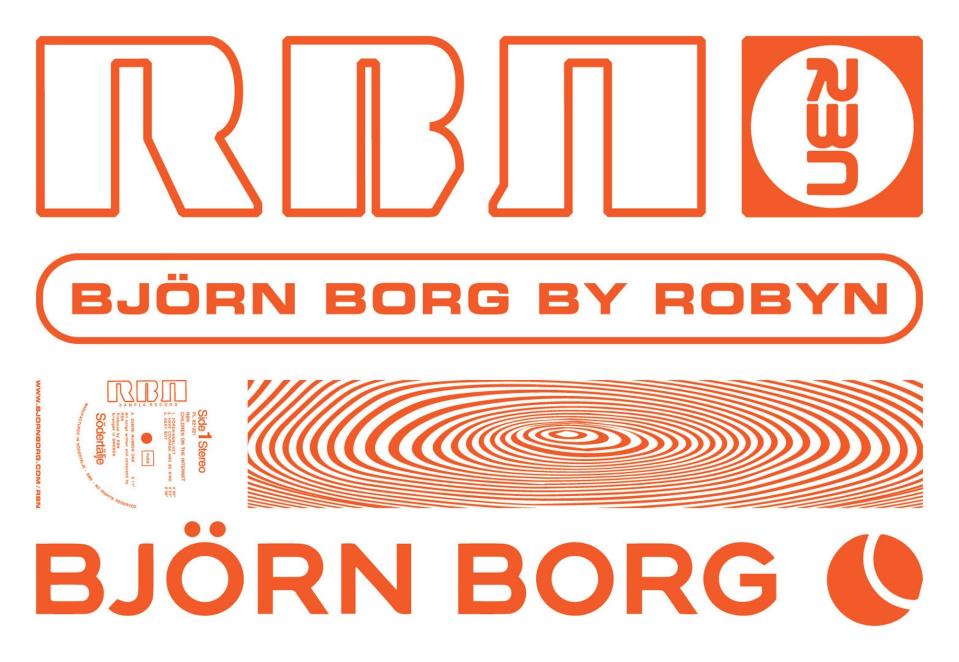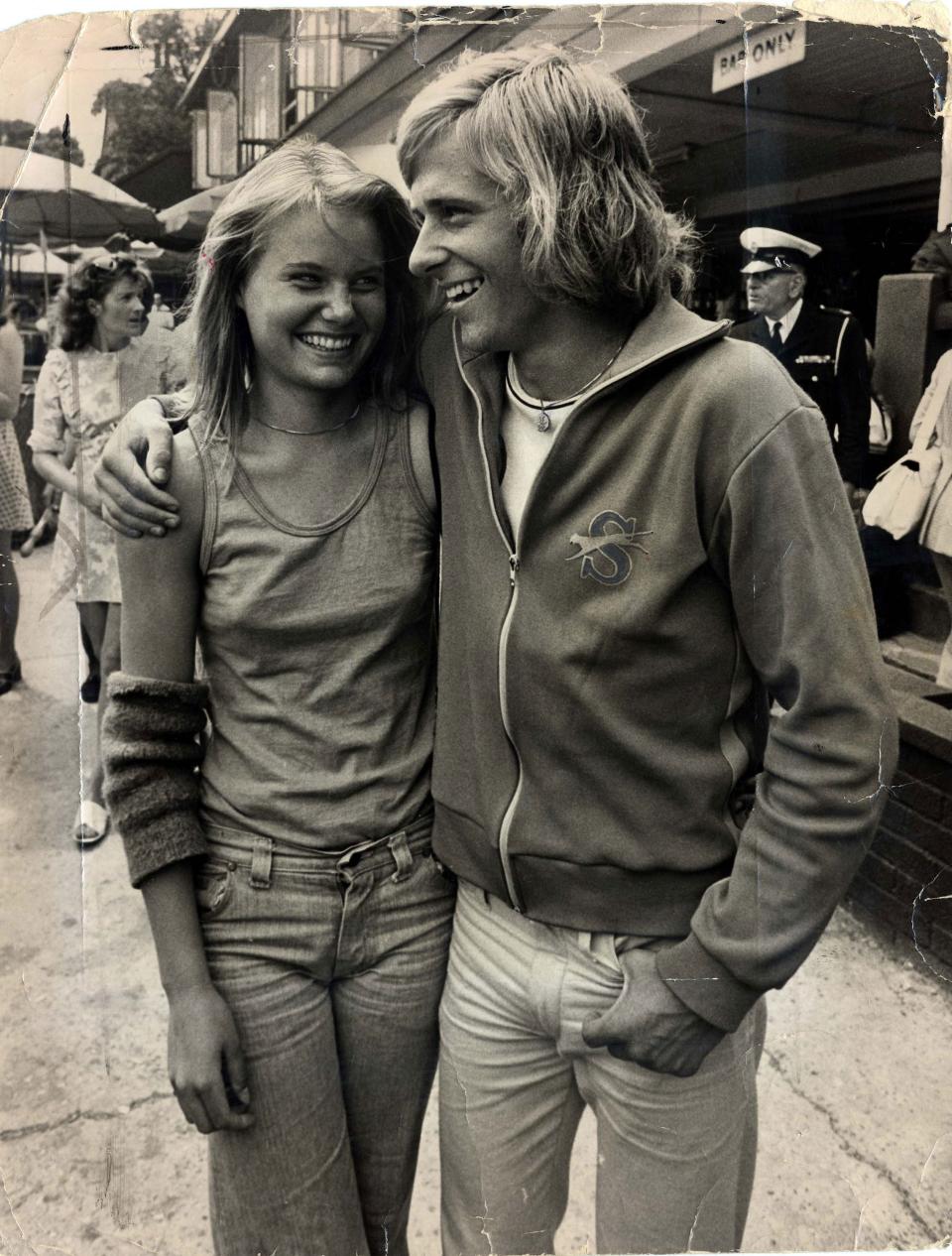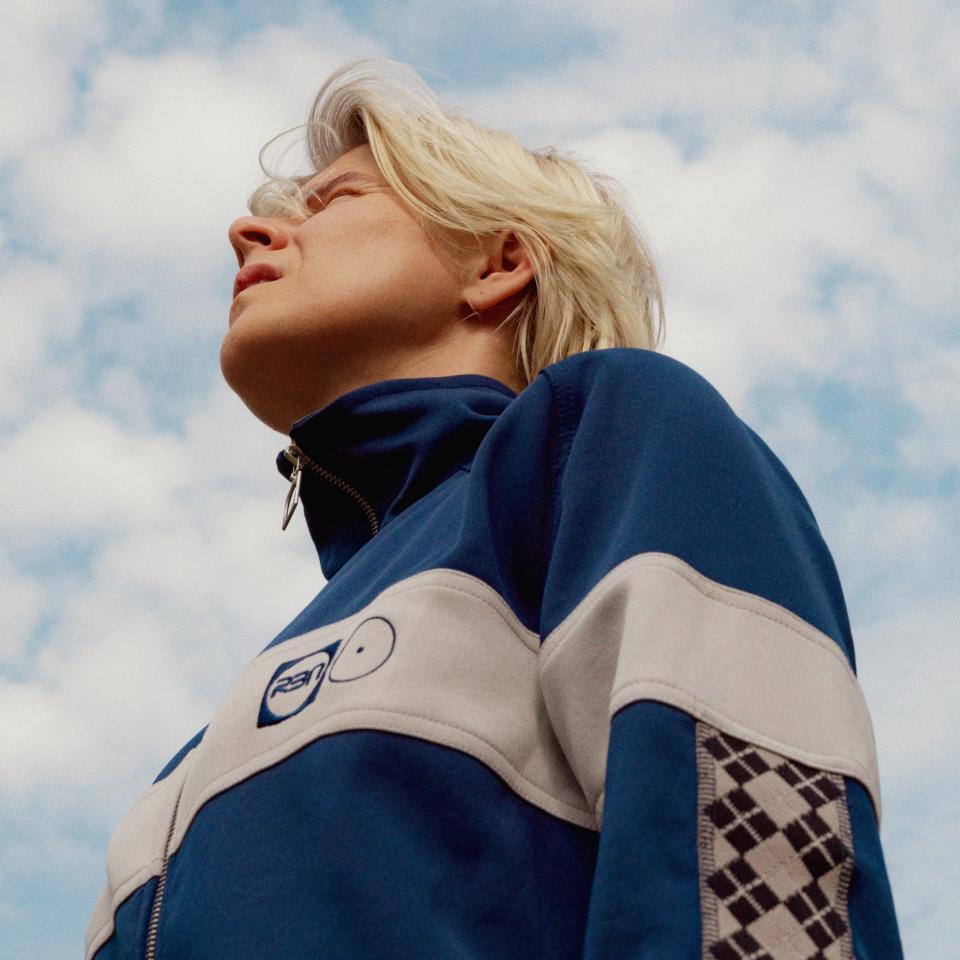Robyn on RBN, Her New Collaboration With Björn Borg; Being a Tomboy; and Starting Again From Zero
Robyn, the platinum-haired Swedish chart-topper, is known for wearing her heart on her sleeve (cue “Dancing on My Own,” “Call Your Girlfriend,” “Missing U”). Recently, after taking a few years out to combat depression and undergo psychoanalysis, the singer triumphantly returned with a new single, and album, Honey. Now, Vogue can exclusively reveal, she’s launching RBN, a limited-edition capsule collection with Swedish brand Björn Borg for Spring 2019. Launching in February, Robyn designed the sports/activewear line with her friend, the stylist Naomi Itkes, and with the cooperation of the house, which opened its archives to the pop star, who also raided her own closets for inspiration.
Apart from the underwear component, RBN is a unisex offering. Its standout pieces are a tracksuit and hoodies that are at once nostalgic and of-the-moment. That makes sense considering the two women thought deeply about their Swedish identity, and their Scandinavian childhoods as they were designing the collection. Robyn describes her approach to sportswear as “sensatory,” while Itkes offers the following nugget: “It’s a best-of collection. The best-of from Robyn’s wardrobe and from the Björn Borg archive.”
Here, Robyn talks about her her love of clothes, breaking the rules, and much more.
Have you worked on a fashion project before?
No. I mean, I’ve always been interested in clothes, I’ve always collected clothes, and I’ve kept a lot of the stuff that I’ve used over the years. I really like the stories clothes tell. I always have ideas about the things that I like to wear and why, and I always enjoy finding clothes that have those extra layers, because you can always tell when someone’s put work into them.

How did this collaboration come about?
My friend Naomi Itkes started working with [Björn Borg] a long time ago and she always told me about their archive and about how many things she’d seen there that she really loved. Jonas Nyvang is the person that works at Björn Borg who came up with the idea of me working with them. We met [at the archive and] just looked at stuff together, and he saw my relationship with Naomi and how we talk about stuff and asked Naomi if she thought it would be interesting for me to get involved. It really wasn’t a plan that I had. Me and Naomi had always talked about it, but I never really pursued it. When the question came from Jonas, and it was connected to work that Naomi already was doing, and I knew that there was a connection that felt interesting. Then it just felt exciting.
How did you land upon the name, RBN?
RBN stands for Robin, Naomi, and Björn in this sense, but RBN was something used before. I made a remix project a couple of years ago—I had other people remix old songs of mine—and it was called RBN RMX. It’s just a play with letters, but then we of course realized that it was also the first letters of our names.
In describing the collection as unisex, were you motivated by the adaptability of items like tracksuits and hoodies, or entering into the discussion around gender fluidity?
Definitely more the practical sense of it. It aligned with me and Naomi’s beliefs more than [being] a political statement. I was always a tomboy, and so was she. It was just never interesting to us to define ourselves as girls or boys. I think we were maybe the first generation to take that as a natural part of growing up, that you could question those things and you could really dress the way you wanted to. It just felt natural to us to do something that everyone could wear. When we started really realizing that that’s what we were doing of course we wanted to make sure that people knew that that was a conscious decision.

Utskrift
You also worked with Anders Haal, who designed the logo. Can you walk us through that?
Anders is a friend of both of ours. [Naomi and I] knew that we wanted there to be a lot of graphic elements in the clothes and that there were words that we wanted to put on the clothes and we just felt that [Anders was] the absolute natural person to ask. The whole thing is like a mix and I think that’s deliberate; to not be true to any particular time and to not be true to any particular kind of clean reference. There is this mix of decades—of the ’70s, and ’80s, and the ’90s—and there’s also this mix of locations, and the mix between music and sport. It was Anders’s idea to use the two circles, which for him were like the ball and the record. And he wanted to make an album . . . a real record, and so I came up with these song titles that were titles referencing the things that we had talked about. One of them is “Föreningslivet” [“The collection of local unions and clubs subsidized by the state to encourage local communion,” as one Swede explains it]. The word Södertälje is on there, which is where Björn Borg grew up; just like things that we wanted people to know were a part of it all. And then there’s Anders’s own fascination for the time when he grew up, which was the ’90s, and the different typographies he’s seen over the years.
Do you have a favorite early memory of Björn Borg?
There’s a very, very cute interview where he’s interviewed by our big evening talk show host, Lennart Hyland, I think in the early ’70s, in the tennis hall in Stockholm, and Björn Borg is about—I don’t know—16 or 17 years old. It’s very cute. I watched that a lot.
What part of the archive were you most drawn to?
We looked at old pictures of Björn Borg, the kinds of shoes that he would wear, just to see what technology was doing at that time. A lot of the materials that were used in the old clothes were so heavy and so different from what you can find nowadays, so we were trying to at least come as close as we could without making the clothes too expensive. I know they’re not cheap, but they’re not very expensive either, and that was really important to us. We were thinking about ourselves as teenagers and wanted to be able to buy these things [if] we were teenagers now. We looked at some of the old T-shirts, the way that they were fitted, and some of the old graphics as well, but a lot of it is also just clothes from when I was in my early 20s that I’ve just saved over the years and that I love and wear now.

1092257a
You’ve said that the collection was in part a reflection of growing up in Sweden when you did. Can you speak more to that?
Just like Björn Borg, I got famous very early on. Sweden being such an uncommercialized culture where pop culture and fame . . . anything that was more commercial was really kind of taboo. And [he was] like the first person that was really young and famous outside of our country in a way and he got really kind of unhappy. He was partying too much and he stopped playing tennis really early on, there were just interesting connections there. We were interested in looking at the old pictures of Björn Borg, the old things in the archive, [and] also connecting them to our experiences of growing up in the same country. So there’s no clear design theory, it’s just a mix between a very kind of sensatory way of approaching sportswear and the things that we remember growing up wearing, I think.
What are you wearing now—besides your RBN collection?
I think that I’m embracing my more feminine side that hasn’t felt really natural to me before—without really knowing what that means. I think I’m maybe a softer person now, and I also maybe dress in a softer way than I have before.
You are even wearing your hair softly feathered . . . .
When I was growing up my mom always cut my hair really short, and in Sweden Robyn is a boy’s name. You know my mom was an actress. I always saw her dress in lots of different costumes; like she was a witch and then she was an animal. Eventually I really started to appreciate that side of her; it also really made an imprint on me. She had thoughts about why she cut my hair short and why she wanted me to have a boy’s name and I think it was really cool and amazing that she was such a kind of critical, radical person who also challenged me growing up. She definitely didn’t make it easy for me in some ways. It’s such a weird thing that identity and how we decide to define ourselves [remains] such a big thing. For me, that’s my natural way to go, like I just want to fuck things up. Whenever I feel like I’m too pleasing or when [something] looks too nice, I just want to make it ugly, or at least that’s how it used to be.
People often don’t care what they look like when they are down. Did you experience that?
Definitely there were times when I was depressed where what I looked like really didn’t matter . . . or no . . . that’s the thing! It did always really matter to me, it was just that it’s hard to define who you are when you’re rearranging your insides. But I think that’s also really interesting; just like how I started to make this album [Honey] and make the music, I had to kind of start from zero. In a way I also kind of felt I had to do that with the way I looked. I just got really tired and uninterested in anything that didn’t feel real and honest, it didn’t feel relevant to create new stories about myself or to dress myself up as something that I didn’t feel was totally me. Because I didn’t know who I was for a long time, I kind of decided to be like super simple in the way I dressed.
You’ve been vocal about being feminist. Is it possible to dress like one, and do you do so?
I would say [I’m] a stereotype-ophobe. Anything that becomes too set or becomes too conventional I just feel very uncomfortable with because things are always much more complicated than that. For me the antidote to whether you’re a feminist or not a feminist—all those things—is to let things have layers. Let things be complicated. And let things take time. That’s the thing I feel that I have to push nowadays more than anything—more than being a feminist, more than any kind of “-ist”—because I think right now we’re at a time where people are being very separatist. I think that’s important; I think it's definitely important for minorities to feel empowered by their own kind; for women to have female role models; for brown people to have brown role models; and for men to also have good role models. But I also think for me, as a woman right now—and maybe because I live in a privileged part of society and a privileged country—I feel that there’s more than ever a need to come together. Coming together is important and so is pushing diversity in a way where it’s not singling things out [but rather] making sure that there is time and space for things to be complex, if you can.
This interview has been edited and condensed.


